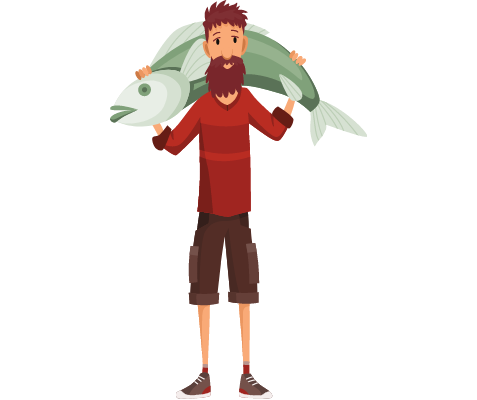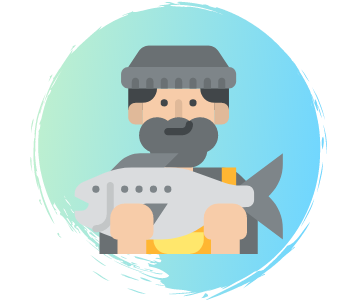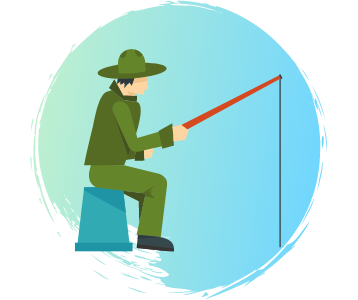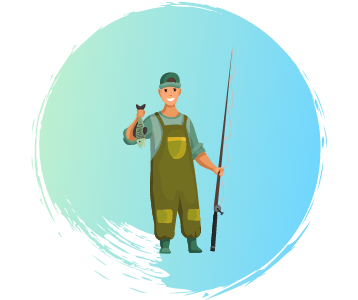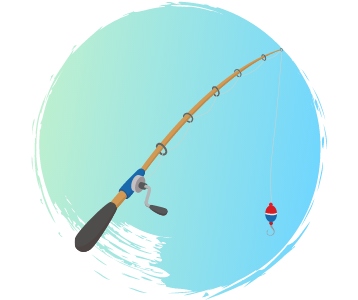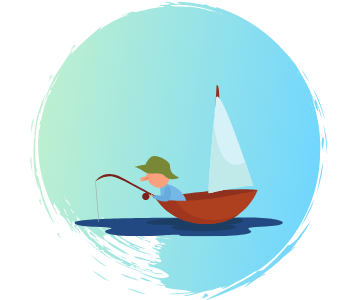Fishing Guides:
How To Catch Flounder
Flounder is a wonderful tasting and odd-looking game fish that can be targeted in quite a few different ways. They put up a great fight, make excellent table fare, and are a far-ranging species of fish.
Many anglers struggle to actually find flounders, thanks to their tendency to bury most of their bodies in the sandy bottom while waiting for food. Flounders are a trickier species to search for, sometimes taking years of experience to become an expert. Here we’ll be going over everything you need to know to get a head start on successfully targeting flounders on your own.
Let’s get started.
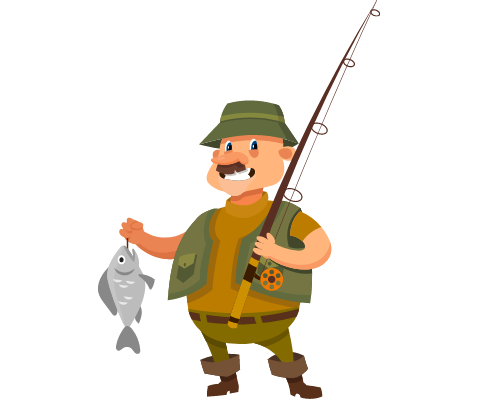
Table Of Contents
Chapter 1:
Getting To Know Your Target
Any good fisherman knows to be successful you have to know at least a bit about the fish you’re targeting. Here we’ll discuss some basic biology of flounders, their typical behaviors, range, and preferred foods.
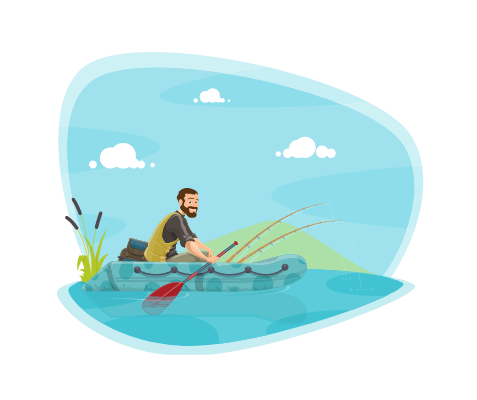
The Basics
Flounder is actually a general term that covers quite a few species of flatfish that range from European Waters to both the East and West Coast of the United States and Hawaii. We’ll be discussing flounders which are also called flukes, the East Coast species of flounder. While these are the specific species this guide is geared towards, all flatfish species have similar behaviors and you can put many of these tips to use with any sport of flounder you’re after.
At birth, flounder look like normal fish and spend their time near the surface of the water. Shortly after, they begin to swim on one side and their eyes migrate to the “top” side of their body. With this eye movement, their internal organs and bones also shift over time, flattening them out and giving them their unique shape.
Flounder, like other flatfish, are apex predator fish that will typically try to eat anything they can get in their mouths. They lay on the bottom and opportunistically gobble up any bait, scraps, or fish that pass by.
Where Can I Catch Flounder?
Flounders live along the East Coast of the United States, from Texas all the way to Maine. They spend time near jetties, wrecks, reefs, channels, and other underwater structures. It’s common for flounders to spend time in bays as well as offshore in deeper water.
Flounder Behaviors of Note
Flounders are sight-based predators that rely on camouflage and a quick strike to capture their prey. They tend to lay on the seafloor or on top of rocks and change their colors to blend in and hide. This can make them extremely difficult to find by sight.
Flounders tend to rely on currents to push their food to them, so be sure to fish around areas with a lot of water movement and strong tides. Despite this, they do not like to sit in the middle of the current. They like to sit in breaks or pockets in the current, as well as right on the edge so they can comfortably sit on the bottom and wait for food to pass by.
Flounder’s Preferred Food
The flounder’s diet is mostly made up of shrimp, crustaceans, smaller flounders, and other baitfish like mullet and bull minnows. Those are their normal foods, but being ambush and opportunistic predators, flounders will usually eat anything that catches their eye and looks like an easy meal.
Chapter 2:
Flounder Fishing Tactics
Targeting flounder takes a lot of practice and experience. You’ll occasionally hook one tossing shrimp or baitfish around jetties or off the beach, but those cases are usually pretty rare. To effectively target flounder, you’ll need to use the right tactics and know which areas are most likely to hold flounder.
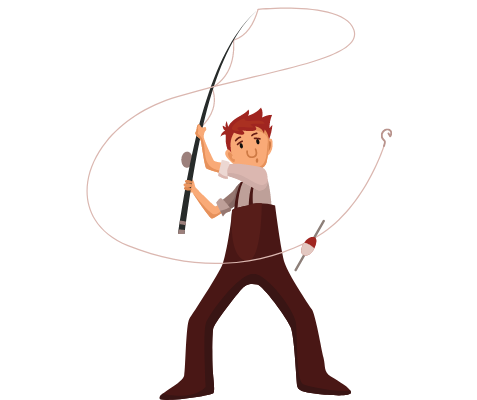
Best Places to Look for Flounder
It’s pretty easy to narrow down areas that are likely to hold flounder. You want to look for places with a lot of water movement, ideal temperatures, a lot of structure, and a good thick bottom.
Jetties pass, channels, and creek mouths are a good place to start your hunt for flounder. They have plenty of good water movement and activity from other fish and tend to have a solid bottom and plenty of structures. Rocks and a sandy or muddy bottom are key for flounders because they need something to sit on and blend in with.
Temperature-wise, if the water is below 60 degrees Fahrenheit then flounders will tend to migrate offshore to deeper wrecks and other structures where it’s warmer. Once the water is above 60 degrees, they’ll move back inshore to feed.
Flounder Gear
Flounder is a bit too strong for ultralight gear but is a fantastic challenge on lighter inshore rods and tackle. A solid medium action, seven-foot rod, and a mid-sized spinning reel are enough to handle flounder.
Line-wise, a good ten to twenty-pound braid is perfect since it’s got enough shock resistance to hold up to heavy strikes and is thin enough to keep from spooking fish. You can use monofilament or fluorocarbon for your leader, usually between ten and twenty pounds as well.
Flounder Size
A typical flounder will be under two feet in length and weigh under 6 pounds. You can find the odd specimen over three feet and over ten pounds sometimes, but these cases are usually pretty rare. On the west coast, flounder’s cousins the halibut can grow well over 200 pounds.
Good Rig Choices
Simple rigs work well for flounders. With live baits, you can simply put some split shot on your line to get a shrimp or other bait down to where the flounder are. Alternatively, you can use a simple sliding leader and slowly pull it across the bottom. Carolina or Texas rigs are another good choices, and you can find them both pre-made or make your own.
Best Baits
Shrimp and live minnows are some of the best baits you can use for flounder. They’re normal foods for them that you can simply pull over the top of the flounder to entice a strike. Live baits are a great choice since flounders can sometimes be picky, but they have a hard time resisting a twitching minnow.
Chapter 3:
Insider Tips and Tricks
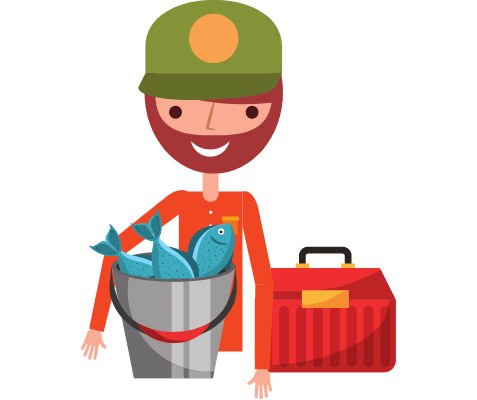
#1: If you find flounder, keep fishing.
Flounders tend to migrate and move around in groups. If you’ve found one flounder, that means you’re in a great area for them and there are most likely more. Try to markdown not only that spot but also remember the conditions in that area so when you do decide to leave you know what to look for!
#2: Don’t immediately set your hook!
It can be tempting to try and set your hook as soon as you feel a nibble but with flounder, you’ll likely just pull your bait out of their mouth. Flounders tend to grab and give their food a couple of chews before swallowing, so you want to make sure the bait has been fully taken before pulling. It gets easier with experience, but if you’re targeting flounder a good rule of thumb is to wait for a second and third little nibble after the first bite, then count to 3 slowly before pulling to set the hook.
#3: Vary your approach.
You know what to look for when it comes to location, but you don’t know what the flounder are most likely to feed on any given day. Try to throw out a cut bait and a live bait to start with, giving them time to soak. While waiting, toss a variety of artificial lures like Gulp Shrimp and Spoons. Once you start to produce fish, you will know which bait will give you the best success for the day.
#4: Toss baits into transitions and potholes.
Any areas of flat bottom that go from sand to mud are great spots for flounders since they attract baitfish and give them a travel lane to navigate. Potholes are just depressions in the sand of varying sizes. They’re attractive for flounders because they tend to be calmer and out of the current while giving flounder a great place to ambush prey. Smaller fish and shrimp caught up in currents will be pushed into these holes, bringing food right to the flounder.
#5: Other ways to target them.
Most flounders are caught on rod and reel but they are a species you can target other ways. Gigging is a popular option, where you spear them either wading or from a boat, usually at night, and using bright flashlights to spot them in the water. Flounders are also a good target for spearfishermen since they tend to rely on camouflage. Once you know what to look for, you can swim right up to them and spear them.
Chapter 4:
Our Top Picks for Flounder Fishing Gear
If you’re going to go flounder fishing, you’ll want to have the right gear. Using the right stuff will not only increase your odds of success, but it’ll help you enjoy your time on the water even more. Here are our top picks for flounder fishing.
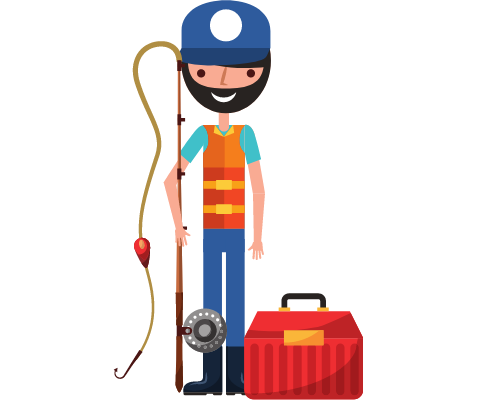
Rods
Best Option: 13 Fishing Omen Black

The Omen Black is a fantastic option for an inshore rod, thanks to its ridiculous sensitivity and balance. The medium-action rods will handle any fish you can hook inshore and are durable enough to last you for years. They’re a perfect option for any inshore fishermen, and you won’t have to break the bank to get your hands on one.
Premium Option: St. Croix Mojo Inshore Fishing Rod

St. Croix rods will always stand out thanks to how light and sensitive their rod blanks are. Their rods tend to exude quality. From the excellent balance, fantastic sensitivity, and comfortable handles to its five-year warranty and years of success, St. Croix rods are a great choice for any angler, and the Mojo Inshore is no exception.
Reels
Best Option: Penn Spinfisher VI

The Penn Spinfisher line is one of the best quality spinning reels on the market. Fully sealed against saltwater, a powerful drag, and a smooth crank make this durable and long-lasting reel a fantastic choice for any sort of saltwater fishing.
I have a hard time not recommending Spinfishers, simply because of my great experience with them. Unlike other reels, I’ve never had a single issue from a spin fisher and they are absolute beasts when it comes to power. For flounder, I recommend the 4500 sizes, but you can easily get away with going with the 3500.
Best Budget Alternative: KastKing Centron
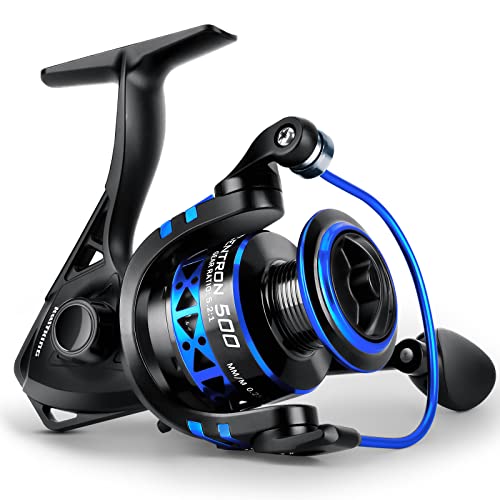
This tiny reel still maxes out around 17 pounds of drag, giving it plenty of power to rip a flounder off the bottom. The anodized aluminum internal parts and graphite frame are corrosion resistant and stand up to salt and spray.
Baits
Live Baits: Live bait is one of the best options for flounder, with shrimp and minnows finding great success. It’s easy to tempt flounder with these as long as you can get it to the bottom and anywhere near them.
Cut Baits: You have a few options for cut bait that find success with flounder. Small pieces of shrimp can work well and so can pieces of mullet or herring. Cut your baits into strips that are around 3 inches long and under an inch wide.
Artificial: Gulp Shrimp is a perfect choice for flounder, and you can get a great lifelike action out of them with a jighead. You’ll want to slowly pull them across the bottom and wait for that telltale nibble. You can find these lures here:
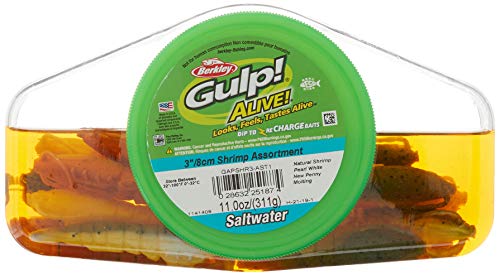
Rigs
Carolina and Texas rigs are solid options when it comes to premade rigs. Using sliding weights like this lets you really keep your bait on the bottom and pull it right over a camouflage flounder.
Chapter 5:
Final Thoughts
Flounder aren’t the easiest fish to learn how to catch, but the effort is worth the reward. They put up a great fight and taste fantastic. After reading through this guide, you have the basic knowledge you need to get started flounder fishing. Tight lines!
